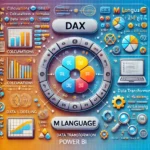In the rapidly evolving landscape of automation, Robotic Process Automation (RPA) has emerged as a game-changer for businesses seeking to optimize their workflows and boost productivity. UiPath, as a prominent RPA platform, has been at the forefront of this transformation. In this blog post, UiPath vs. RPA we will explore the concept of RPA, its benefits, and how UiPath stands out as a leading player in the field of automation.
What is RPA?
Robotic Process Automation (RPA) is a technology that utilizes software robots or bots to mimic human actions and automate repetitive, rule-based tasks within business processes. These bots interact with applications, systems, and databases to execute tasks, freeing up human resources from mundane and time-consuming activities.
The Role of UiPath in RPA
UiPath is a leading RPA platform that empowers organizations to automate a wide range of processes across various industries. Its user-friendly interface and extensive library of automation activities allow business users to create and manage automation workflows efficiently. UiPath’s approach to automation is non-invasive, meaning it does not require changes to the underlying systems, making it a scalable and cost-effective solution.
https://synapsefabric.com/2023/07/27/uipath-vs-pega-unraveling-the-titans-of-automation-and-bpm/
Benefits of RPA
- Improved Efficiency: RPA eliminates manual errors and accelerates processes, leading to increased efficiency and reduced processing times.
- Cost Savings: By automating repetitive tasks, organizations can save on labor costs and redirect human resources to more strategic initiatives.
- Enhanced Accuracy: RPA bots execute tasks with precision and consistency, minimizing errors in critical processes.
- Scalability: RPA allows businesses to scale automation efforts based on their evolving needs, accommodating growth and change.
Use Cases of RPA
RPA finds applications across various industries and departments, including finance, human resources, customer service, and supply chain management. Some common use cases include data entry and extraction, invoice processing, report generation, customer onboarding, and order fulfillment.
UiPath’s Advantages in RPA
- Versatility: UiPath offers extensive support for automation across desktop applications, web browsers, and legacy systems, making it versatile for different automation requirements.
- Easy Integration: UiPath seamlessly integrates with existing applications and databases, ensuring smooth data exchange and interaction between systems.
- Cognitive Automation: UiPath’s integration of artificial intelligence and machine learning enables cognitive automation, allowing bots to handle unstructured data and make intelligent decisions.
https://synapsefabric.com/2023/07/27/automation-anywhere-vs-blue-prism-unleashing-the-power-of-intelligent-automation/
In conclusion, RPA has revolutionized the way organizations optimize their processes and drive efficiency. UiPath stands out as a leading RPA platform, offering a user-friendly and scalable solution for businesses of all sizes. With its extensive automation capabilities and ease of use, UiPath empowers businesses to unlock the full potential of automation and enhance their competitive edge.
By embracing RPA with UiPath, organizations can streamline operations, reduce costs, and redirect valuable human resources to focus on higher-value tasks. As the automation journey continues, UiPath remains at the forefront of driving digital transformation and shaping the future of business automation.






